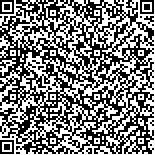| 摘要: |
| 根据2009 年11 月至2010 年8 月对烟台3 种典型潮间带的大型底栖动物调查, 分析了烟台典型潮间带大型底栖动物的群落结构特征, 包括群落种类组成、丰度和生物量、优势种、多样性等, 采用MDS 和CLUSTER 分析了大型底栖动物的群落结构, 并用AMBI 和m-AMBI 对底栖群落和环境质量进行了评估。结果表明: 本次调查共鉴定出大型底栖动物111 种, 其中多毛类动物40 种, 甲壳动物37 种,软体动物29 种, 棘皮动物1 种, 鱼类2 种, 其他动物2 种(包括纽虫和腔肠动物各1 种)。多毛类动物和甲壳动物占据了研究区域底栖群落的主要成分, 两者分别占据了群落总种数的36.04%和33.33%。从季节来看, 3 种类型潮间带物种数均为冬季最低, 而秋季则普遍处于较高水平。物种丰度在3 种类型潮间带的分布为泥沙质的渔人码头>泥质的养马岛>沙质的辛安河口, 3 种类型潮间带的丰度主要贡献者分别为甲壳动物、软体动物和多毛类动物。渔人码头和辛安河口的生物量均以秋季为最高, 而养马岛在冬季达到最高, 且远高于其他3 个季节; 软体动物是3 种不同类型潮间带生物量的主要贡献者。烟台3种类型潮间带出现的优势种多达15 种, 但多数优势种仅在某个潮间带的单个季节出现, 优势种受季节和潮间带类型的影响明显; 日本大螯蜚(优势度为0.29~0.82)是渔人码头全年的优势种, 中型阿曼吉虫则是辛安河口的主要优势物种, 养马岛的优势物种则为养殖逃逸的菲律宾蛤仔。与以往历史资料相比, 烟台潮间带大型底栖动物已经受到了人类活动的深刻影响, 原有的潮间带经济种类已经严重退化或消失。 |
| 关键词: 大型底栖动物 烟台 潮间带 群落结构 |
| DOI:10.11759/hykx20130704001 |
| 分类号: |
| 基金项目:中国科学院交叉合作团队和国家自然科学基金资助项目(41006076; 41106101) |
|
| The community structure and distribution pattern of intertidal macrobenthos in the intertidal zone of Yantai |
|
|
| Abstract: |
| Intertidal flat is suffered from many different disturbances with rapid population growth and economic development. To assess the effects of human activities on intertidal macrozoobenthic community, the community structure and distribution pattern of intertidal macrobenthos in the intertidal flat of Yantai were analyzed and evaluated, based on the data collected from the 3 intertidal types in Yantai during November 2009 to August 2010. The community composition and structure were analyzed, and the ecological quality was also evaluated by AMBI and m-AMBI. A total of 111 macrobenthic species were collected and identified. Polychaeta was the most dominant species group with 40 taxa (36.04%), followed by Crustacea with 37 taxa (33.33%). The species number was lowest in winter and highest in autumn in three different intertidal zones. The total abundance was highest in Fisherman’s wharf, followed by Yangma Island and Xin’an Estuary. Crustacean, mollusca and polycheate were the main contributor to above intertidal flats, respectively. Mollusca was the main contributor to the total biomass of three different intertidal zones, with highest biomass in autumn to Fisherman’s wharf and Xin’an Estuary whilst in winter to Yangma Island. Fifteen dominant species were calculated in this three intertidal zones, and most dominant species only occurred in species intertidal types and/or seasons. Across all sampling seasons, Grandidierella japonica Stephensen, Armandia intermedia Fauvel, and Ruditapes philippinarum were the dominant species in Fisherman’s wharf, Xin’an Estuary and Yangma Island, respectively. Compared with previous research, intertidal macrobenthos had been strongy affected by anthropogenic disturbance, and the previous economic species have degenerated or disappeared. |
| Key words: macrobenthos Yantai intertidal flat community structure |
